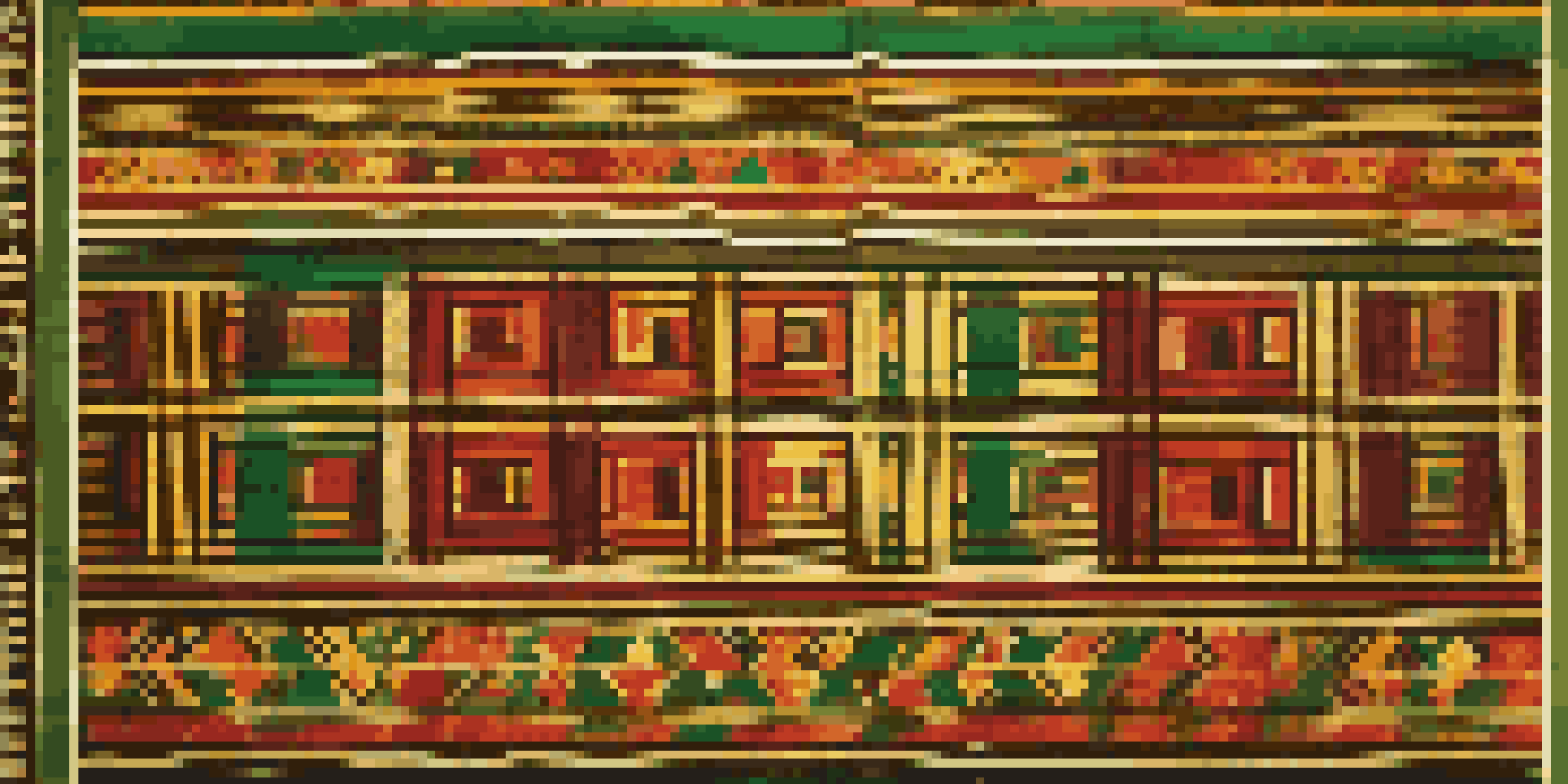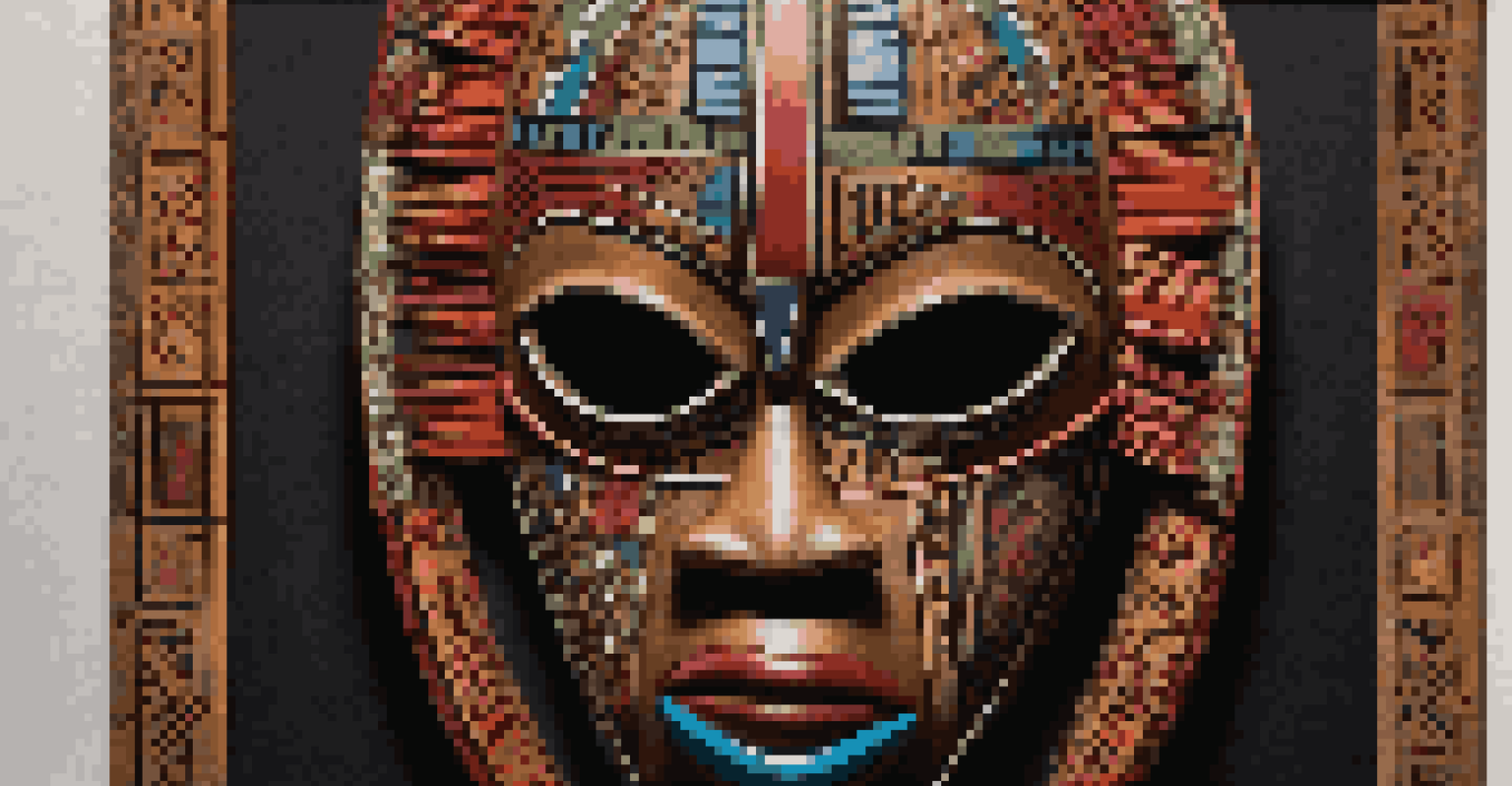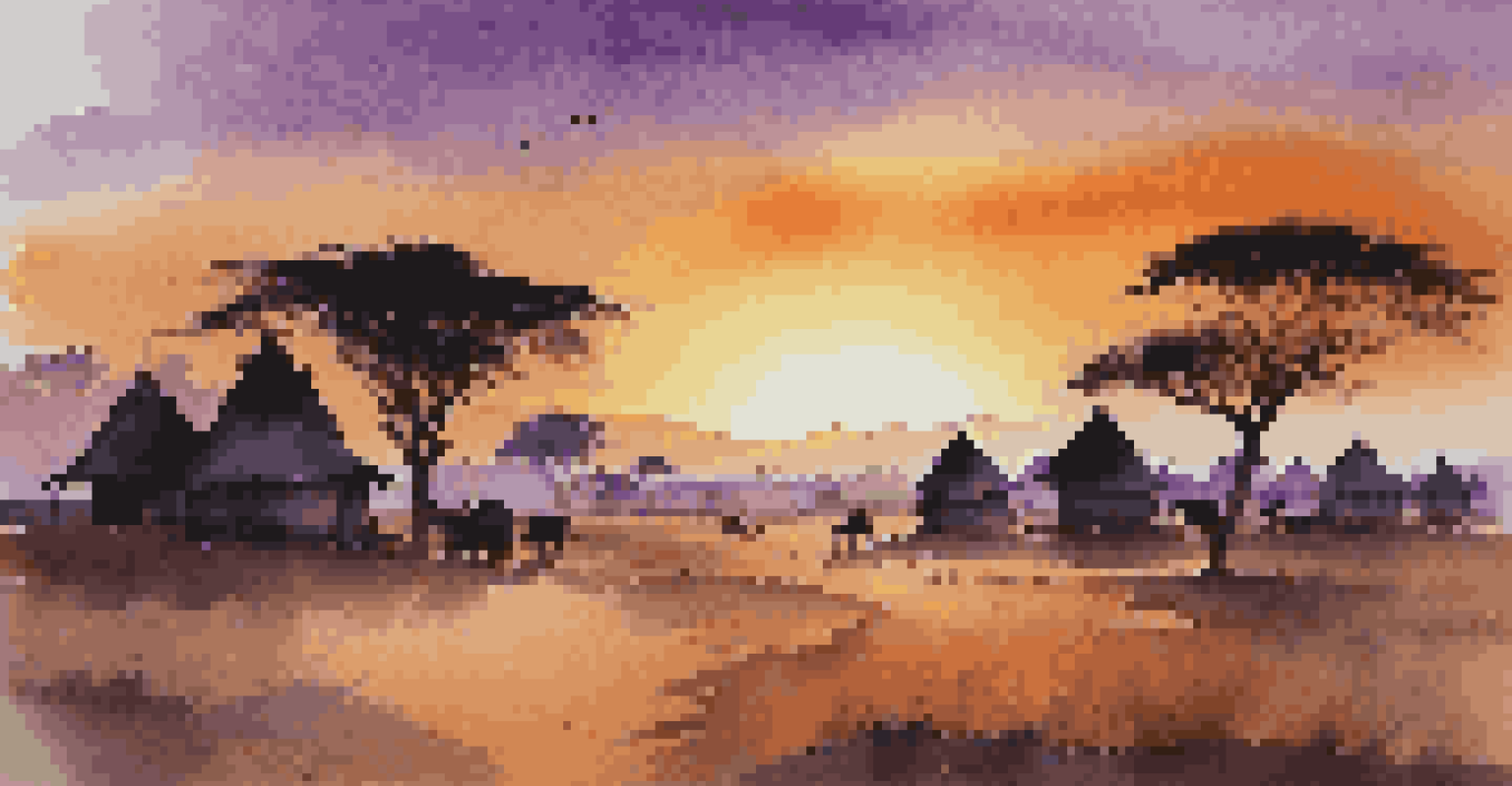Exploring the Use of Symbols in African Art

Understanding Symbols: More Than Just Art
Symbols in African art serve as a bridge between the tangible and the spiritual. They convey messages, beliefs, and stories that resonate deeply within various cultures. For instance, a simple shape can represent complex ideas such as community, ancestry, or nature's elements.
Art is the most beautiful of all lies; it is the only way that we can truly communicate our journey through time and space.
These symbols are often rooted in the history of the people and their environment, reflecting their values and experiences. By exploring these symbols, we gain insights into the worldview of African societies and how they express their identity through art.
Moreover, understanding these symbols can enhance our appreciation of the artwork itself, allowing us to see beyond aesthetics to the rich cultural narratives they embody.
Common Symbols and Their Cultural Significance
In African art, certain symbols recur across various cultures, each with its unique interpretation. For example, the Adinkra symbol ‘Fawohodie’ signifies freedom and independence, often used in textiles and pottery. This symbol illustrates how art can serve as a medium for expressing collective aspirations.

Similarly, the ‘Nkyinkyim’ symbol stands for initiative, dynamism, and versatility. These symbols are not just decorative; they encapsulate moral lessons and philosophical concepts that guide people’s lives.
Symbols Reflect Cultural Identity
African art symbols convey deep cultural messages, beliefs, and stories that illustrate the identity and worldview of various societies.
By examining these symbols, we see how they function as a visual language, communicating ideas that transcend spoken words and fostering a sense of community and continuity.
The Role of Color in Symbolism
Color is another vital element in African art that enhances the meaning of symbols. Different colors can evoke specific emotions and symbolize various concepts. For example, red might represent strength or sacrifice, while green often symbolizes fertility and growth.
Symbols are the language of our thoughts, the means by which we express the inexpressible.
Artists skillfully use color to amplify the message of their symbols, creating a layered experience for the viewer. This relationship between color and symbol invites deeper reflection on the artwork’s meaning.
As we explore these connections, we begin to appreciate how color and symbol work together to tell stories that are both personal and universal.
Symbolism in Masks and Ritual Objects
Masks are a prominent feature in African art, rich with symbolic significance. They are often used in rituals and ceremonies, encapsulating the identities of spirits, ancestors, or societal roles. Each mask tells a story, with its design and symbols carefully chosen to convey specific messages.
For example, a mask used in a dance might symbolize the transition from one life stage to another, celebrating birth, death, or marriage. The intricate carvings and colors are not just for decoration; they hold cultural narratives that are key to understanding the community's beliefs.
Color Enhances Symbolic Meaning
Color plays a crucial role in African art, amplifying the messages of symbols and inviting deeper reflection on the artwork.
Through masks, we see how art becomes an active participant in cultural practices, reflecting and shaping the social fabric of life.
Symbolism in Textiles and Weaving
Textiles in African cultures are often rich with symbolic meanings, woven into every strand. Patterns and colors in fabrics like kente cloth from Ghana are laden with history and significance, each design telling a story or conveying a moral lesson.
For instance, specific patterns can represent social status, historical events, or even proverbs. This intertwining of art and everyday life showcases how textiles serve not only as clothing but also as a canvas for cultural expression.
By wearing these textiles, individuals embody their cultural heritage, transforming fabric into a powerful symbol of identity and pride.
Impact of Colonization on Symbolism in African Art
The impact of colonization on African art and its symbolism is profound and complex. As Western influences permeated African societies, many traditional symbols were altered or reinterpreted. In some cases, this led to a dilution of the original meanings, while in others, it sparked a creative renaissance.
Artists began to blend traditional symbolism with contemporary themes, creating new forms of expression that reflect a hybrid identity. This dynamic evolution illustrates how cultures adapt and respond to external influences while retaining core values.
Colonization Shaped Art Symbolism
The impact of colonization led to a complex evolution in African art, blending traditional symbols with contemporary themes to reflect a hybrid identity.
Understanding this historical context allows us to appreciate the resilience of African art and its ability to convey both tradition and modernity through symbols.
The Future of Symbolism in African Art
As we look to the future, the symbolism in African art continues to evolve while honoring its roots. Contemporary African artists are increasingly exploring new mediums and technologies, infusing traditional symbols with fresh perspectives. This blend of old and new creates a vibrant dialogue within the art world.
Moreover, the global appreciation for African art has opened avenues for wider recognition of its symbolic significance. Artists are now reaching audiences beyond their local communities, sharing their stories and symbols on international platforms.

This ongoing journey of exploration and expression highlights the enduring power of symbols in shaping cultural narratives and fostering connections across diverse audiences.